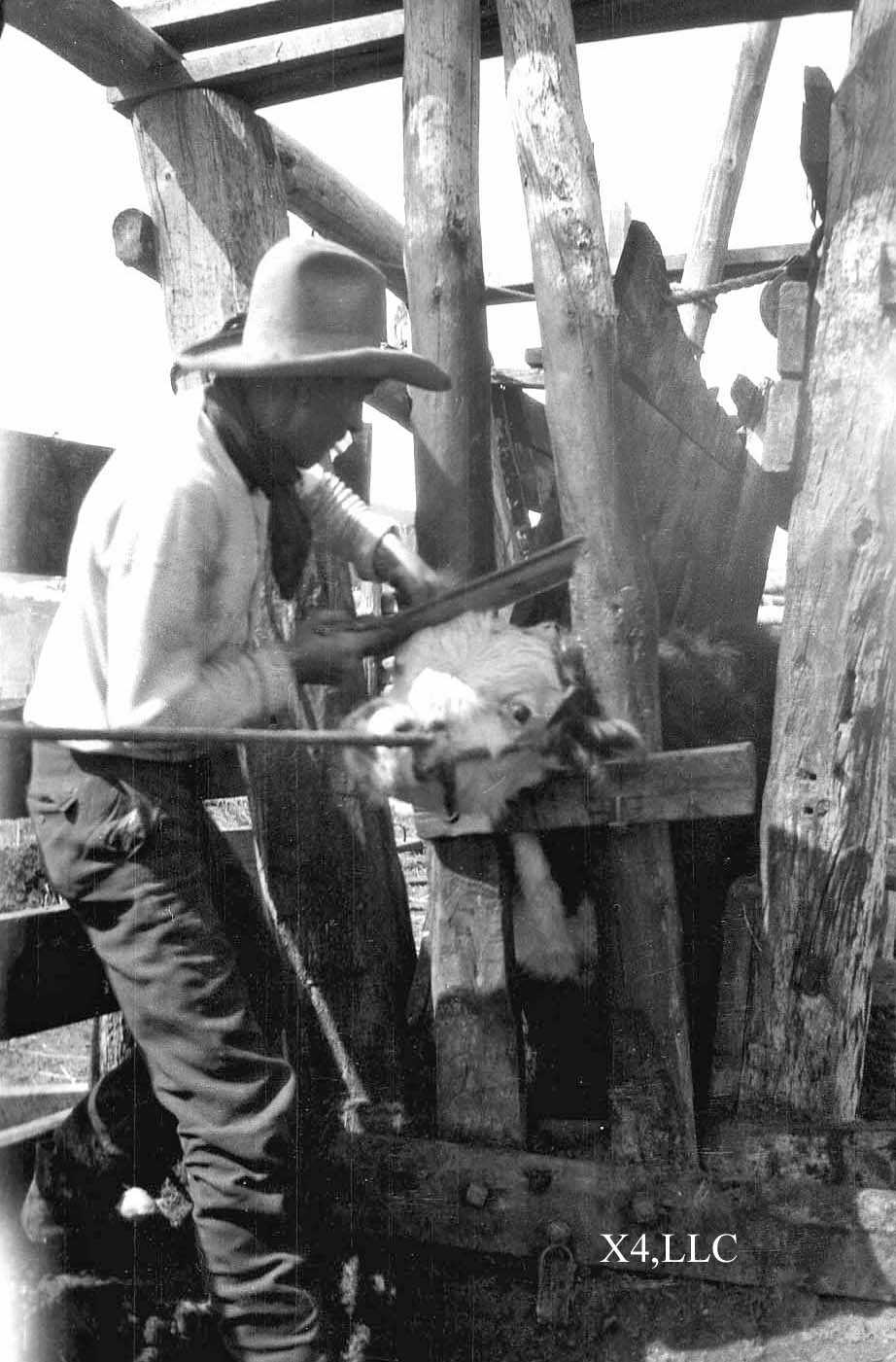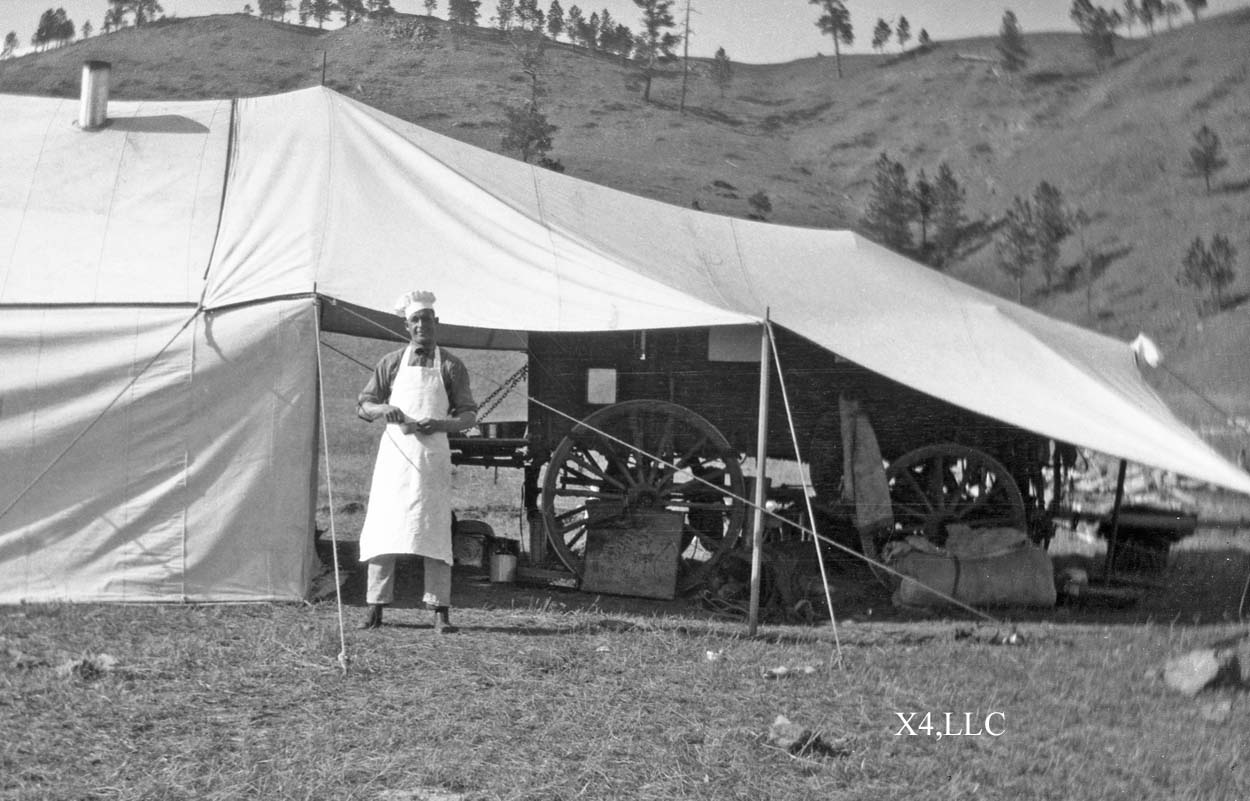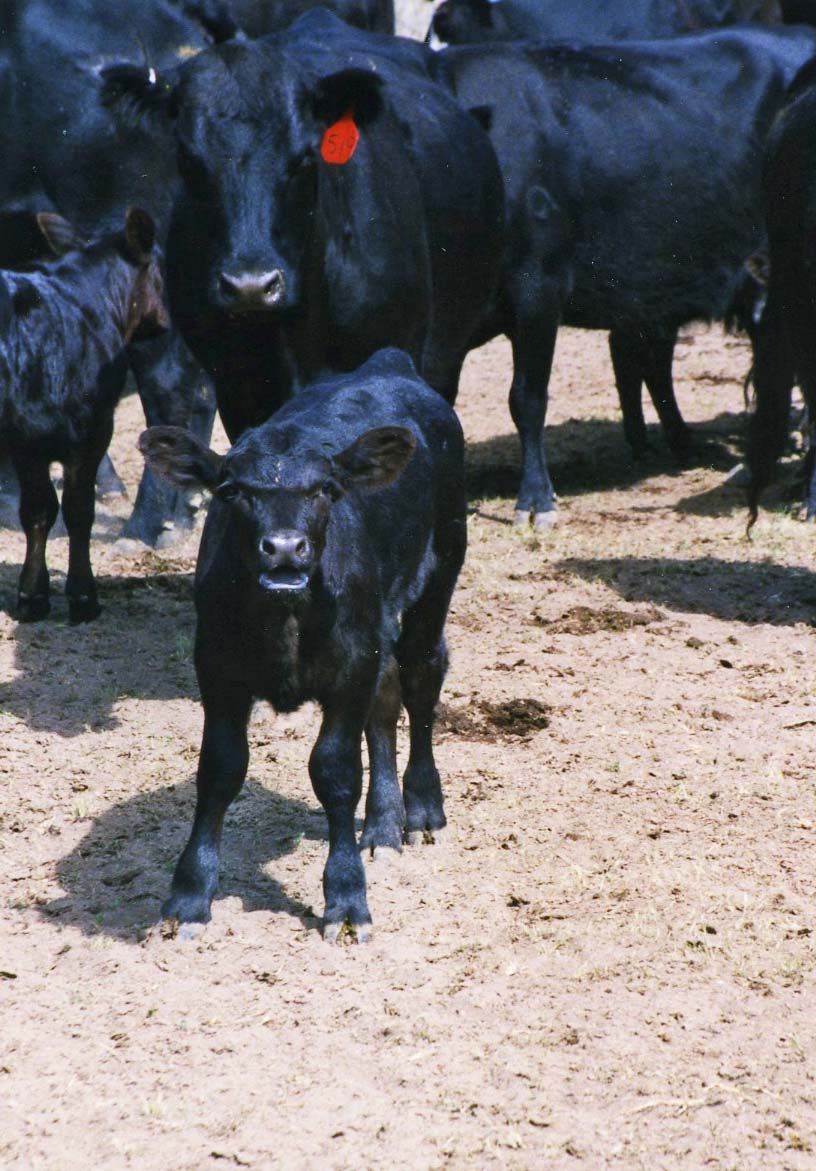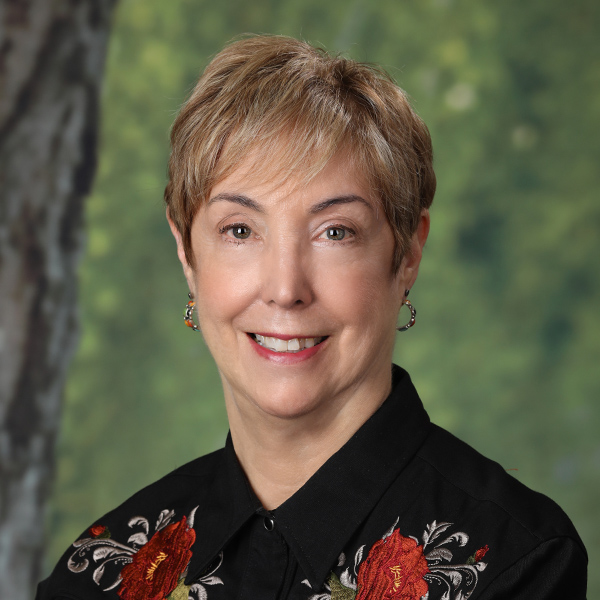MORE COWBOY JARGON
Jul 21, 2022 by Tempe Javitz
MORE COWBOY JARGON:
Cut: To ‘cut’ a herd is to divide it into groups or to separate a
particular cow or certain cows, say with a certain brand, into a
separate group. Hence the term ‘cutting horse’ for a horse that is
particularly good at this maneuver.
Dally: No, I don’t mean to loaf around. When you are roping a calf
at branding time, you wrap the rope around the saddle horn once you
have caught the calf, that’s a dally. The saddle horn is your snubbing post.
Dehorn: To remove the horns off cows or calves. Back in the day, the
horns were sawed off. Now at branding time the horns are removed with
a ‘scoop”. The wound is treated to prevent infection and flies. Cattle with
horns are a nuisance to each other and dangerous to people who work
with them.

Dehorning at the X4 Ranch
Dogie: (Dough-gee) An orphan calf, or simply a calf. You may have heard a
cowboy song, “Git along little dogie.” Orphan calves are often called bum calves.
Drag: The back end of a trail herd, also called the tail. The drag position
is no fun, you spend it eating dust and pushing the little calves that are tired
and want to run away.
Drugstore Cowboy: A person who acts and dresses like a cowboy but has no
experience of handling cattle and horses. There’s a great song, “All Hat and
No Cattle” by Trace Adkins.
Dry Cow: A cow that did not have a calf this year, so isn’t producing milk.
Dude: According to Win Blevins’ “Dictionary of the American West,” Yellowstone
Park rangers created the word in the 1870’s to refer to visitors from the East
vacationing on a ranch. It’s also used to suggest a person decked out in fancy
clothes.
Dun: This refers to a tan horse with a black mane, tail and socks and often with
a dorsal stripe. A ‘buckskin’ horse has the coloration of a buck deer, but also
sports a black mane, tail, socks and that dorsal stripe.
Earmark: Making a cut in the ear, or ear crop, of a calf during branding that
indicates ownership. These days earmarks are often replaced by ear tags.
Fly: A canvas sheet used to keep rainwater off, often attached at the back of
the chuck wagon to protect the cook.

A roundup tent and fly with the wagon and the cook.
and be hard to control.
Grullo: (Groo-yoh) A horse that is a slate-blue color like the sandhill crane.
Guest Ranch: The same as a Dude ranch where visitors come for pack trips, fishing,
hiking, and horseback riding.
Gumbo: Soil that gets gummy and sticky when wet, making roads almost impassable.
A common problem on dirt ranch roads in SE Montana and NE Wyoming.
Hackamore: A halter with reins and a noseband instead of a bit. A hackamore is
often used in training a young horse.
Hand: Short for cowhand. If someone calls you a real hand it’s a compliment.
You are doing a good job no matter what you are doing.
Hard-Mouthed: This describes a horse who is unresponsive to the bit.
Hasher: A logger’s term originally for the cook. A cook was also called a dough
puncher, a dough wrangler, a grease burner, a hash slinger, a grease ball and other
unsavory terms.
Hay Hand: A man hired for the haying season. Women nowadays also drive
those big monster threshers for cutting hay, oats, corn, etc.
Header (and heeler): The team roper who throws a rope over the steer’s head
and the heeler ropes the heels, thus stopping the steer in its tracks. Today a rodeo
event that is timed. The fastest time these days is 3.3 seconds.
Hereford: One of the most common breed of Western range cattle. They are red
with white faces. Herefords were imported from Herefordshire, England in the
1880s to improve the Texas longhorns.
Angus or Aberdeen Angus: A Scottish breed of cattle, native to north-eastern
Scotland. Angus are widely used in crossbreeding to improve the quality of the
beef. Angus females calve easily and have good calf rearing ability.

My photo of a Angus calf in May 1998
Cut: To ‘cut’ a herd is to divide it into groups or to separate a
particular cow or certain cows, say with a certain brand, into a
separate group. Hence the term ‘cutting horse’ for a horse that is
particularly good at this maneuver.
Dally: No, I don’t mean to loaf around. When you are roping a calf
at branding time, you wrap the rope around the saddle horn once you
have caught the calf, that’s a dally. The saddle horn is your snubbing post.
Dehorn: To remove the horns off cows or calves. Back in the day, the
horns were sawed off. Now at branding time the horns are removed with
a ‘scoop”. The wound is treated to prevent infection and flies. Cattle with
horns are a nuisance to each other and dangerous to people who work
with them.

Dehorning at the X4 Ranch
Dogie: (Dough-gee) An orphan calf, or simply a calf. You may have heard a
cowboy song, “Git along little dogie.” Orphan calves are often called bum calves.
Drag: The back end of a trail herd, also called the tail. The drag position
is no fun, you spend it eating dust and pushing the little calves that are tired
and want to run away.
Drugstore Cowboy: A person who acts and dresses like a cowboy but has no
experience of handling cattle and horses. There’s a great song, “All Hat and
No Cattle” by Trace Adkins.
Dry Cow: A cow that did not have a calf this year, so isn’t producing milk.
Dude: According to Win Blevins’ “Dictionary of the American West,” Yellowstone
Park rangers created the word in the 1870’s to refer to visitors from the East
vacationing on a ranch. It’s also used to suggest a person decked out in fancy
clothes.
Dun: This refers to a tan horse with a black mane, tail and socks and often with
a dorsal stripe. A ‘buckskin’ horse has the coloration of a buck deer, but also
sports a black mane, tail, socks and that dorsal stripe.
Earmark: Making a cut in the ear, or ear crop, of a calf during branding that
indicates ownership. These days earmarks are often replaced by ear tags.
Fly: A canvas sheet used to keep rainwater off, often attached at the back of
the chuck wagon to protect the cook.

A roundup tent and fly with the wagon and the cook.
Green broke: A horse that has been ridden only once or twice and is apt to buck
and be hard to control.
Grullo: (Groo-yoh) A horse that is a slate-blue color like the sandhill crane.
Guest Ranch: The same as a Dude ranch where visitors come for pack trips, fishing,
hiking, and horseback riding.
Gumbo: Soil that gets gummy and sticky when wet, making roads almost impassable.
A common problem on dirt ranch roads in SE Montana and NE Wyoming.
Hackamore: A halter with reins and a noseband instead of a bit. A hackamore is
often used in training a young horse.
Hand: Short for cowhand. If someone calls you a real hand it’s a compliment.
You are doing a good job no matter what you are doing.
Hard-Mouthed: This describes a horse who is unresponsive to the bit.
Hasher: A logger’s term originally for the cook. A cook was also called a dough
puncher, a dough wrangler, a grease burner, a hash slinger, a grease ball and other
unsavory terms.
Hay Hand: A man hired for the haying season. Women nowadays also drive
those big monster threshers for cutting hay, oats, corn, etc.
Header (and heeler): The team roper who throws a rope over the steer’s head
and the heeler ropes the heels, thus stopping the steer in its tracks. Today a rodeo
event that is timed. The fastest time these days is 3.3 seconds.
Hereford: One of the most common breed of Western range cattle. They are red
with white faces. Herefords were imported from Herefordshire, England in the
1880s to improve the Texas longhorns.
Angus or Aberdeen Angus: A Scottish breed of cattle, native to north-eastern
Scotland. Angus are widely used in crossbreeding to improve the quality of the
beef. Angus females calve easily and have good calf rearing ability.

My photo of a Angus calf in May 1998
